Momentum is just one component of Metro’s vision for the future of transit in the Washington region.
We know that there are many questions about the relationship between Momentum, Metro’s strategic plan, and ConnectGreaterWashington, Metro’s long-range Regional Transit System Plan. These are two really ambitious, visionary plans that put forth a vision both for the Authority itself, as well as the transit map of the future. So below is a handy reference guide that compares the two plans across a variety of factors. This FAQ is a work in progress, so please add questions below and we will modify the table with other key details.
|
Momentum
|
ConnectGreater
Washington
|
|

|

|
| Purpose |
- Develop actions that Metro can take to meet the mission, vision and goals adopted by WMATA’s Board.
- Identify key infrastructure initiatives, defined as Metro 2025, that Metro can implement to maximize the existing system without expanding it.
|
- Develop the future transit map that the region needs to meet its projected population and employment growth.
- Note the plan is being developed without specific operators in mind, especially for the high capacity surface transit corridors. However, a subset of the overall plan will come under Metro’s purview, build on Metro 2025, and ultimately become Metro 2040.
Read more… |
Now that Momentum has been adopted 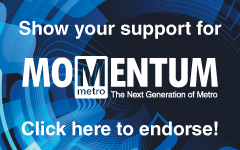 by Metro’s Board of Directors, what’s next? How can the region ensure that the plan is implemented? What is Metro doing internally to make sure the organization is on track? What can you do to help?
by Metro’s Board of Directors, what’s next? How can the region ensure that the plan is implemented? What is Metro doing internally to make sure the organization is on track? What can you do to help?
Board members and members of Metro’s Executive Leadership Team have been meeting with local officials, businesses, civic organizations, and other stakeholders throughout the course of the plan’s development. Their support of the plan is critical to its implementation. This outreach will continue in order to ensure that the region’s leaders are aware of the plan, the benefits of its implementation, and the cost of doing nothing. This outreach is intended to garner a wide array of support, similar to what was obtained at other key points during Metro’s history. Many area businesses and organizations, from AAA to Zipcar, and a growing list of private citizens have already endorsed the plan. If you haven’t done so already, please endorse Momentum online now. Read more…
The seven projects in Metro 2025 will 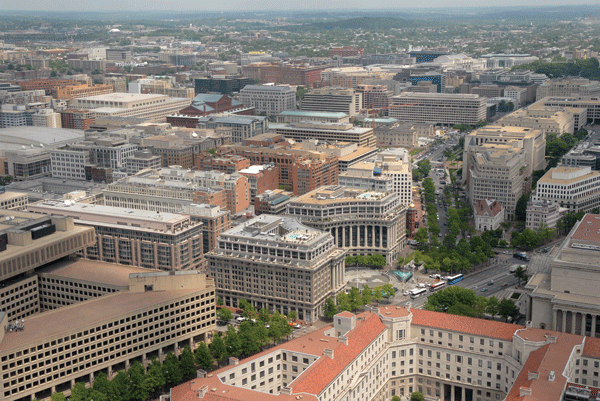 reduce road congestion, save money throughout the region, add riders to the Metro system, and make Metro rides more comfortable and efficient.
reduce road congestion, save money throughout the region, add riders to the Metro system, and make Metro rides more comfortable and efficient.
Capacity Increases to Support Additional Ridership
Metro 2025 investments will take 135,000 cars off the region’s roads, adding 300,000 boardings to transit, each day. This will help to reduce congestion while increasing transit ridership. With 100 percent eight-car trains, Metrorail will be able to carry the majority of those trips and have adequate capacity to carry the expected ridership of over one million daily trips by 2040. Implementing the full Priority Corridor bus network will enable increased bus use by over 100,000 daily trips by 2040. Next generation communications have helped draw new riders in Boston and Chicago. These investments save all travelers time and money, regardless of whether they ride.
We Lay the Groundwork for Expansion
Four of the Metro 2025 projects are prerequisites to outward expansion of Metrorail. Eighty percent of Metrorail riders travel to, or transfer at, one of a dozen core stations, but the core is reaching its capacity. Before expanding, the trains, tunnels, and stations downtown need to be able to handle the demand. Metro 2025 does this, and lays the groundwork for future rail transit expansion in the region.
Read more…
Momentum’s outreach was unprecedented. 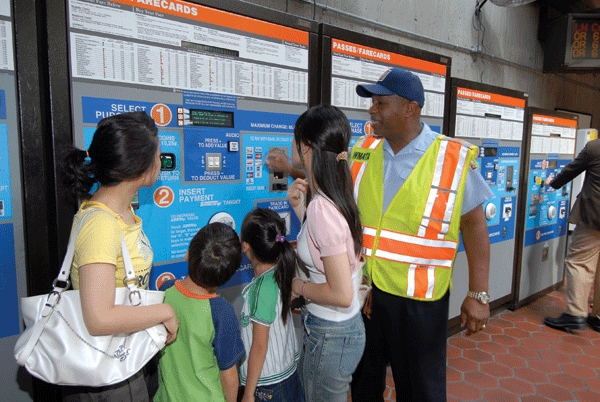 Metro staff heard from almost 12,000 stakeholders during the process, which helped inform our understanding of the public’s short- and long-term needs. Below is a high-level summary of the most commonly-held viewpoints across region:
Metro staff heard from almost 12,000 stakeholders during the process, which helped inform our understanding of the public’s short- and long-term needs. Below is a high-level summary of the most commonly-held viewpoints across region:
- Make no small plans for Metro;
- Recognize Metro is critical to the region’s future;
- Continue rebuilding;
- Reduce crowding;
- Provide better customer information; and
- Ensure predictable funding.
Elected/Public Officials
“Fix the funding problem, and be the region’s transit Authority”
Elected and other public officials were supportive of Momentum and planning for the future, though concerns were voiced that current funding levels were not sufficient to support the regions’ future needs. Major areas of focus included system capacity, regional mobility, enhanced connectivity including suburb to suburb commutes, integrating with other regional transit projects, economic development and Metro serving as the region’s transit planning leader. Specific support emerged for bus rapid transit and expanded bus services to address both core capacity and suburb-to-suburb issues and 100 percent eight-car trains to address core capacity and platform crowding. Officials also seem to agree that Metro should “be responsible for coordinating regional connectivity” by fulfilling its role as the transit planner of the region, as outlined in the Metro Compact.
During a meeting with the Maryland Congressional delegation, all members present expressed their willingness to discuss the reauthorization of PRIIA or finding other means of federal investment when the current authorization expires in 2018; however, the delegation was clear in stating that local and state officials need to take lead on securing a substantial and local capital funding commitment before Congress would act.
Read more…
Delivering the transit system that 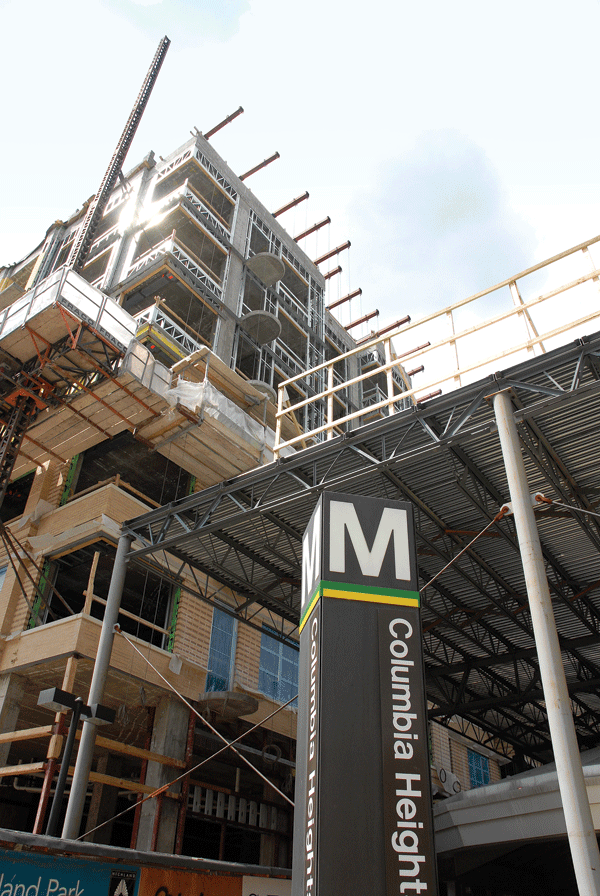 the region needs will require an unequivocal commitment of additional resources from internal and external stakeholders. Simply put, the rehabilitation work being accomplished at the time of the writing of this document will not be nearly enough to keep up with the region’s needs, and without additional resources it will be unlikely that the region can continue to enjoy a transit network that contributes to competitiveness and makes the Washington metropolitan area one of the most desirable places to live and work.
the region needs will require an unequivocal commitment of additional resources from internal and external stakeholders. Simply put, the rehabilitation work being accomplished at the time of the writing of this document will not be nearly enough to keep up with the region’s needs, and without additional resources it will be unlikely that the region can continue to enjoy a transit network that contributes to competitiveness and makes the Washington metropolitan area one of the most desirable places to live and work.
Metro – Doing Business Differently
Metro recognizes that rebuilding the region’s transit system also means rebuilding the region’s transit authority – and will continue to be hard at work on this task in preparation for the implementation of Momentum. In the near term this means revamping nuts and bolts elements of the authority, including but not limited to: identifying ways that Metro can do its job more efficiently while increasing performance; evaluating its contracting and procurement philosophy to emphasize lifecycle contract and asset management; engineering a budgeting process that allows Departments to strive to achieve the goals of Momentum within the context of tight fiscal and financial discipline; and a human capital strategy that must have the right talent in-place and in-queue. In the long term, this means completing the journey to a much more business-like operating and execution philosophy for the organization.
The year 2040 may seem distant  and removed, but in the context of transit planning, it is right around the corner. Metro’s Office of Planning is in the process of developing the 2040 Regional Transit System Plan (RTSP), which will outline a comprehensive regional transit network to prepare the region’s transit system for continued growth.
and removed, but in the context of transit planning, it is right around the corner. Metro’s Office of Planning is in the process of developing the 2040 Regional Transit System Plan (RTSP), which will outline a comprehensive regional transit network to prepare the region’s transit system for continued growth.
The RTSP, along with other elements that may be identified in the future, will need to be evaluated as necessary to meet the demands in the future. The plan includes a combination of core system improvements, which are included as part of Metro 2025 above, as well as system connectivity and expansion projects. Most importantly, it combines all modes in the region’s transit system, whether or not Metro will build or operate them. The strategies in the plan are designed to both serve existing areas better and provide service to new areas, helping to realize Region Forward’s vision of regional activity centers with transit options that improve regional mobility, enhance commerce and competitiveness, and have environmental and health benefits for generations to come.
Read more…
Adding special types of tracks at key locations in the system will provide more flexibility to the overall system.
- Pocket tracks: allow trains to turn back in the direction from which they came (short-lining), gap trains to be stored until placed in revenue service, and the staging of track equipment until nighttime trackwork
- Crossovers: allow trains to single track during incidents or nighttime trackwork
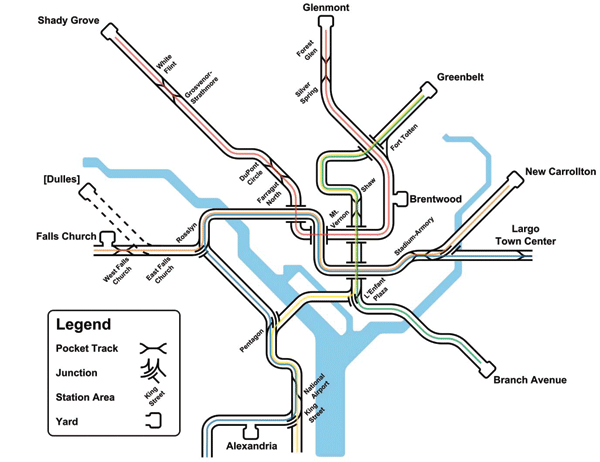 Purpose and Need
Purpose and Need
The Metrorail system includes various single- and double-crossovers and additional ones will shorten the distance of single tracking. The system also has seven mid-route turnbacks, each of which is configured to operate as a third or “pocket” track capable of storing an eight-car train. To improve efficiency and reduce operating costs, certain lines could utilize a pocket track for a “short-lining” turnback to provide improved service to the highest-demand segments of the line. Other new pocket tracks would allow for storage of gap trains, disabled trains and track equipment. Read more…
Like many of the nation’s transit 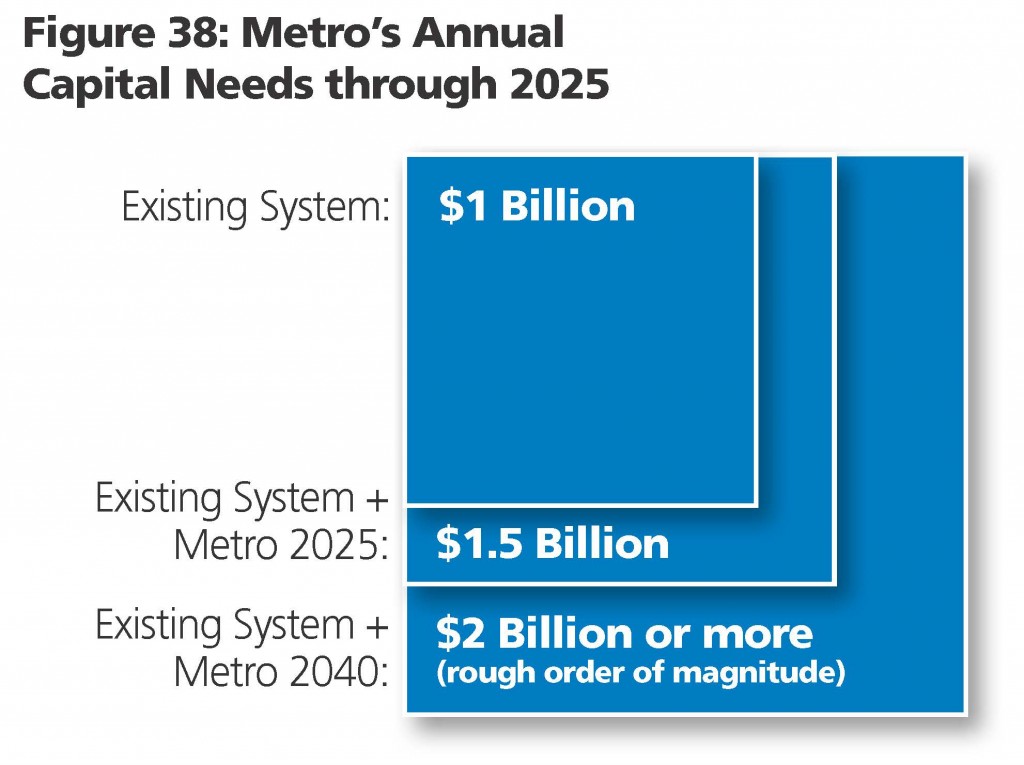 agencies, Metro must rebuild its once-new capital assets as they wear down and deteriorate after decades of use. Metro could feasibly use every penny in its capital budget for years to come just reducing its backlog of maintenance issues. Moreover, Metro also needs to ensure that the system is able to overcome the capacity constraints that come with a regional population expected to swell in both the central core and the suburbs in the years ahead. And on top of this, Metro will need to address calls for entirely new service in many areas of the region. Once Metro is rehabilitated, the system will require a stable level of investment to maintain a state of good repair as it continues to age and deteriorate. Metro estimates that $1 billion (in 2012 dollars) per year is necessary to support and maintain the existing system, even after rehabilitation. Metro 2025 will expand the core and system capacity, as well as ensure that the region’s capital investments are successful. This requires an additional $500 million, on average, in annual capital funding through 2025.
agencies, Metro must rebuild its once-new capital assets as they wear down and deteriorate after decades of use. Metro could feasibly use every penny in its capital budget for years to come just reducing its backlog of maintenance issues. Moreover, Metro also needs to ensure that the system is able to overcome the capacity constraints that come with a regional population expected to swell in both the central core and the suburbs in the years ahead. And on top of this, Metro will need to address calls for entirely new service in many areas of the region. Once Metro is rehabilitated, the system will require a stable level of investment to maintain a state of good repair as it continues to age and deteriorate. Metro estimates that $1 billion (in 2012 dollars) per year is necessary to support and maintain the existing system, even after rehabilitation. Metro 2025 will expand the core and system capacity, as well as ensure that the region’s capital investments are successful. This requires an additional $500 million, on average, in annual capital funding through 2025.
Certainly, increases in the overall size and scope of the system will also have an impact on operating costs, which would grow to some degree when new rail cars, buses, and service are put in place. These operating costs may grow in line with the proportional size of system expansion or at a lower rate, especially if increases in reliability and the increased attractiveness of transit to today’s non-riders has a disproportionate effect on ridership, mode choice, and revenues for modes that have high farebox recovery ratios today and/or where existing demand is already delivering more revenue than operating costs.
Read more…
Momentum’s outreach was unprecedented.  Metro staff heard from almost 12,000 stakeholders during the process, which helped inform our understanding of the public’s short- and long-term needs. Below is a high-level summary of the most commonly-held viewpoints across region:
Metro staff heard from almost 12,000 stakeholders during the process, which helped inform our understanding of the public’s short- and long-term needs. Below is a high-level summary of the most commonly-held viewpoints across region:
- Make no small plans for Metro;
- Recognize Metro is critical to the region’s future;
- Continue rebuilding;
- Reduce crowding;
- Provide better customer information; and
- Ensure predictable funding.
Business leaders were asked a series of questions about Momentum to gauge the extent that they believe the strategic plan is focused in the right direction. Five different growth options were presented and respondents were asked their level of support for each of them. The options included:
- Running all eight-car trains;
- Installing bus-only lanes as well as other bypass measures;
- Improving stations via widening platforms, more escalators/elevators, pedestrian tunnels;
- Improving communications infrastructure at stations, bus stops, online & fare payment; and
- Relieving track and station congestion at Rosslyn with new infrastructure.
There was clear support for the eight-car trains, with three out of four business leaders choosing this as a priority. Improved communications was also supported by six out of ten surveyed. The rest of the improvements had support from approximately one half of the total respondents. Read more…
Read more…










Recent Comments